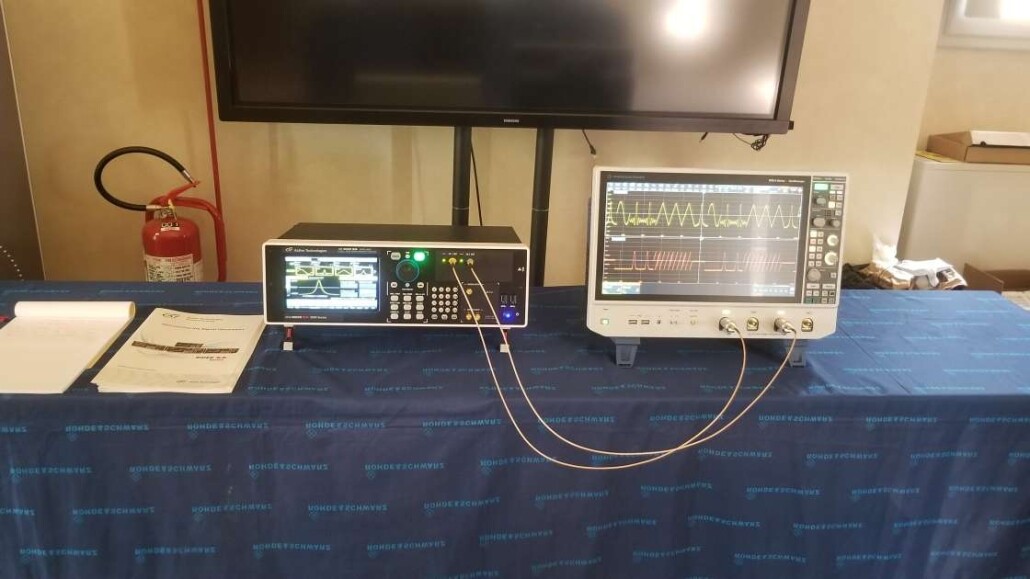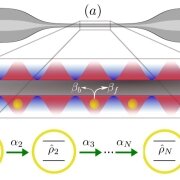Laser Driver test with Picosecond pulse generator
In big physics experiments, photomultipliers are fundamental since they allow to convert photons in electric charge that can be received by the acquisition system allowing the detecting photons. Picosecond pulse generators help to test those components. The emission of phonons can be correlated to a specific phenomenon studied by physicians like the Cherenkov effect. During the photomultipliers design and production stages, it is necessary to characterize and calibrate them using a laser beam or a LED diode. The light source must be driven by an enable signal with a fixed width and repetition. Using Active Technologies picosecond pulse generator Pulse Rider PG-1000 Series pulse generators it is possible to generate a pulse with different width, period and amplitude.
It is very fast and easy setting a single pulse, put the instrument waiting for external trigger-in, or generate pulses in continuous way.
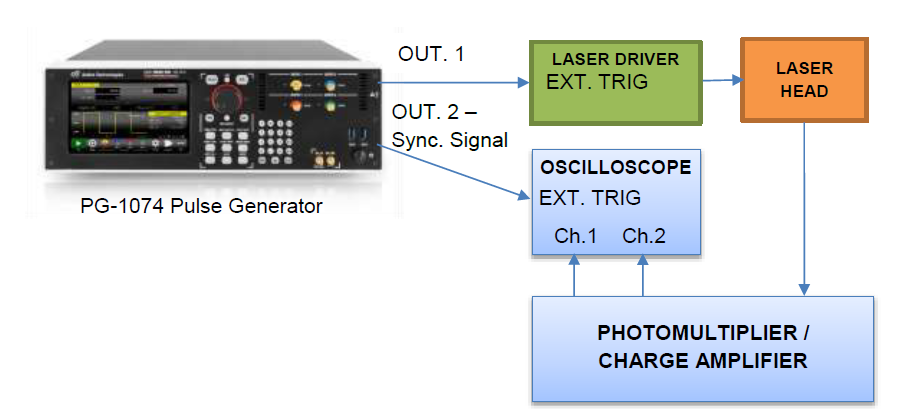
Active Technologies PG-1072 and PG-1074 deliver exceptional fast rise and fall time down to 70ps and a minimum pulse width of 300ps.
Sub-nanosecond pulse generation 5V output swing is now easy to get, just setting few parameter in the moder and easy to use interface.
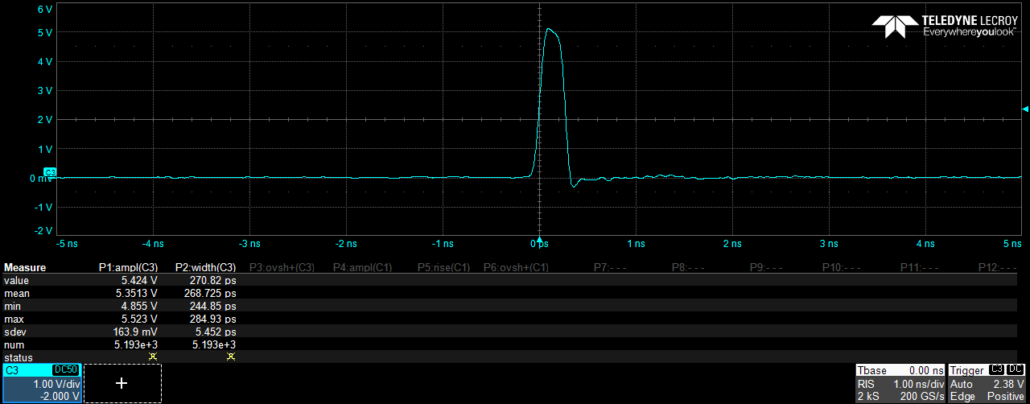
The signal quality and reliability of the pulses are demonstrated on the filed, by oscilloscope measurements. The above picture shows 5V amplitude and <300ps width pulse.
Klystron Control and Synchronization
A klystron is a specialized linear-beam vacuum tube that can be used in multiple applications, as example in the colliders used for big physics experiments, it has the purpose to generate the particles that will collide.
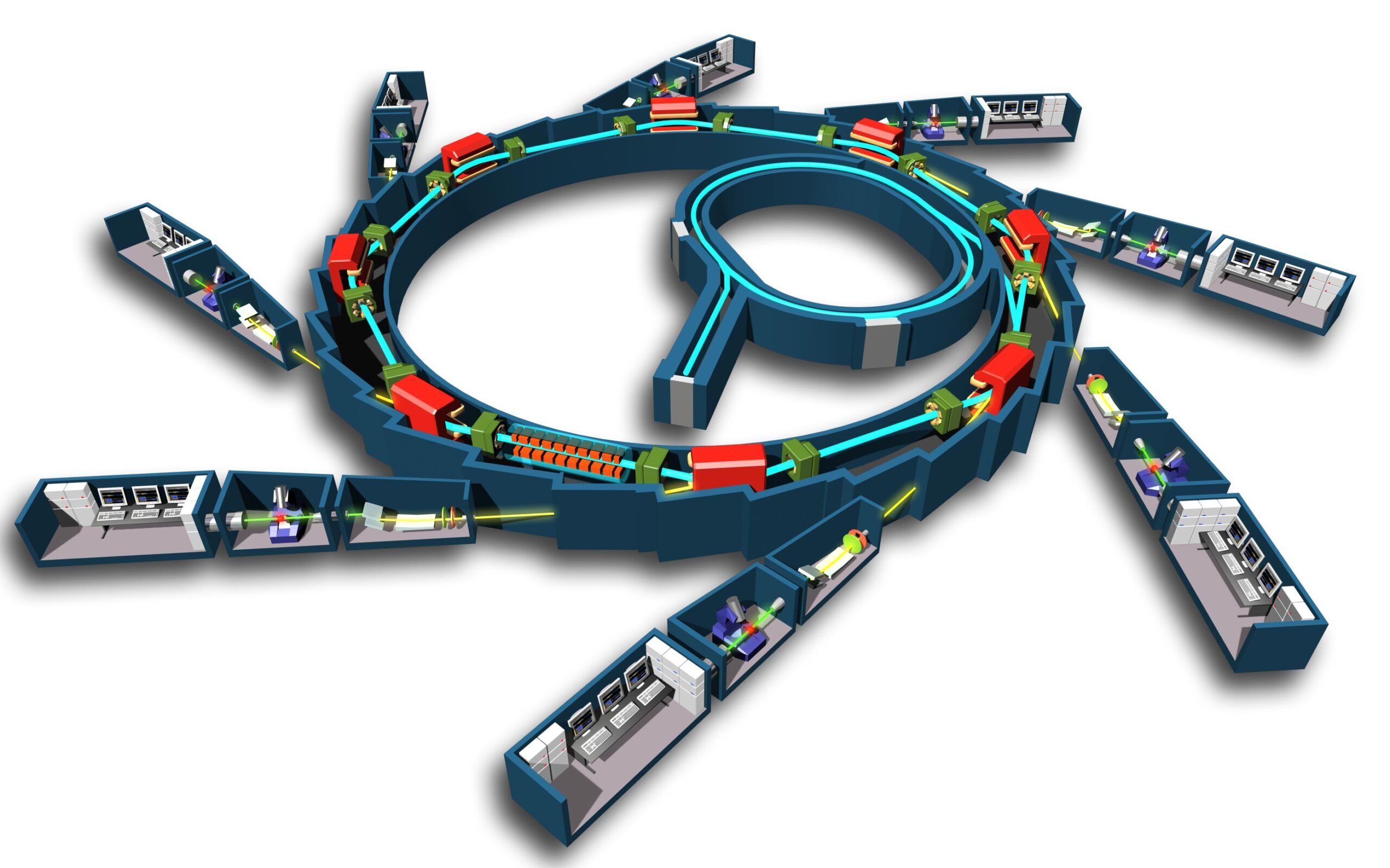
Like for the laser applications, it is necessary to generate an enable signal to drive the klystron. That signal can be generated by a complex system based on logical port or on FPGA, but the design and developing of this system could take long time, moreover if it is necessary to change the timing, the user has to change the schematic or the FPGA code. The Pulse Rider PG-1000 Series pulse generators offer an off-the-shelf solution to control and modify the klystron enable signal parameters in an easy way using the graphical interface and the touch screen display.
Another interesting application in klystrons driving is the possibility of synchronize multiple units; the PG-1000 Series pulse generators have up to 4 independent synchronized channels that can be used to supply synchronization signals with a specific delay from the trigger signal. This feature allows to synchronize multiple klystrons taking count and compensating the delay between the different driving chains.
Read Out System Testing
In big physics experiment despite the main role is played by the detectors that allow observing physical phenomenal, a very efficient read out electronic acquisition chain is equally important because it permits to collect and store many real time data. The read out chain is based on a hierarchic tree structure where the lowest level is near the detectors and it converts the digital pulses using a communication protocol to deliver information to the next level. Usually the lowest level is composed by an FPGA system that collects the digital pulses of multiple detectors and creates a data packet to deliver to the next level using an optical link. During the development of this system, the engineers usually don’t have detectors or the entire colliders in their laboratory, so it is necessary to find a way to simulate pulses generated by the detectors. Using the Active Technologies Pulse Rider PG-1000 Series pulse generators it is possible to test the response of the FPGA system making sure on the timings and synchronization; as example you can inspect what will happen if the channels would have some skew and test the receiving of multiple pulses or glitches.
The Active Technologies Pulse Rider PG-1000 Series pulse generators offer up to 4 channels, each channel deliver single, double, triple or quadruple pulses each pulse independent with its period, width and delay respect to the trigger-in signal.
Ferrara, April 10th, 2020




